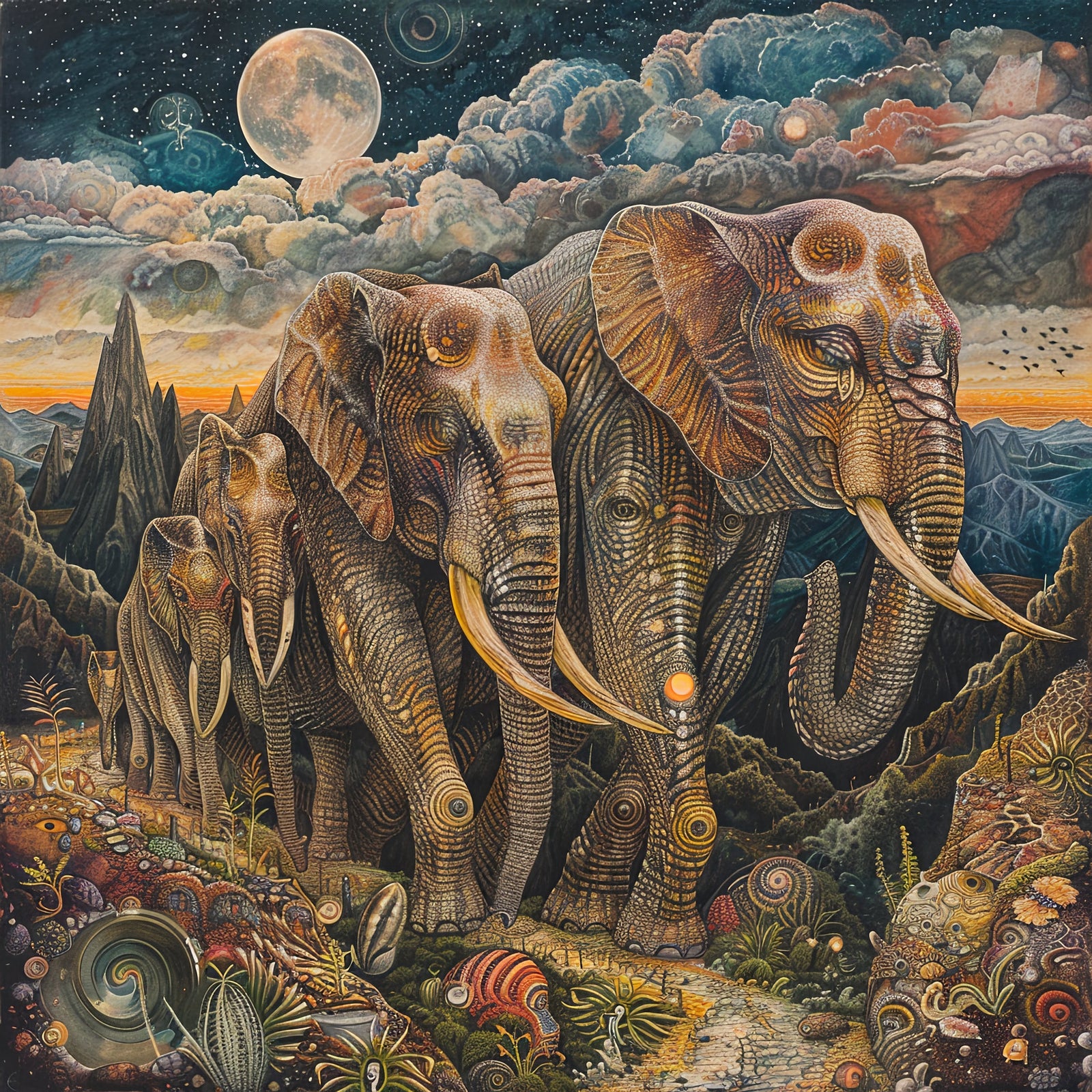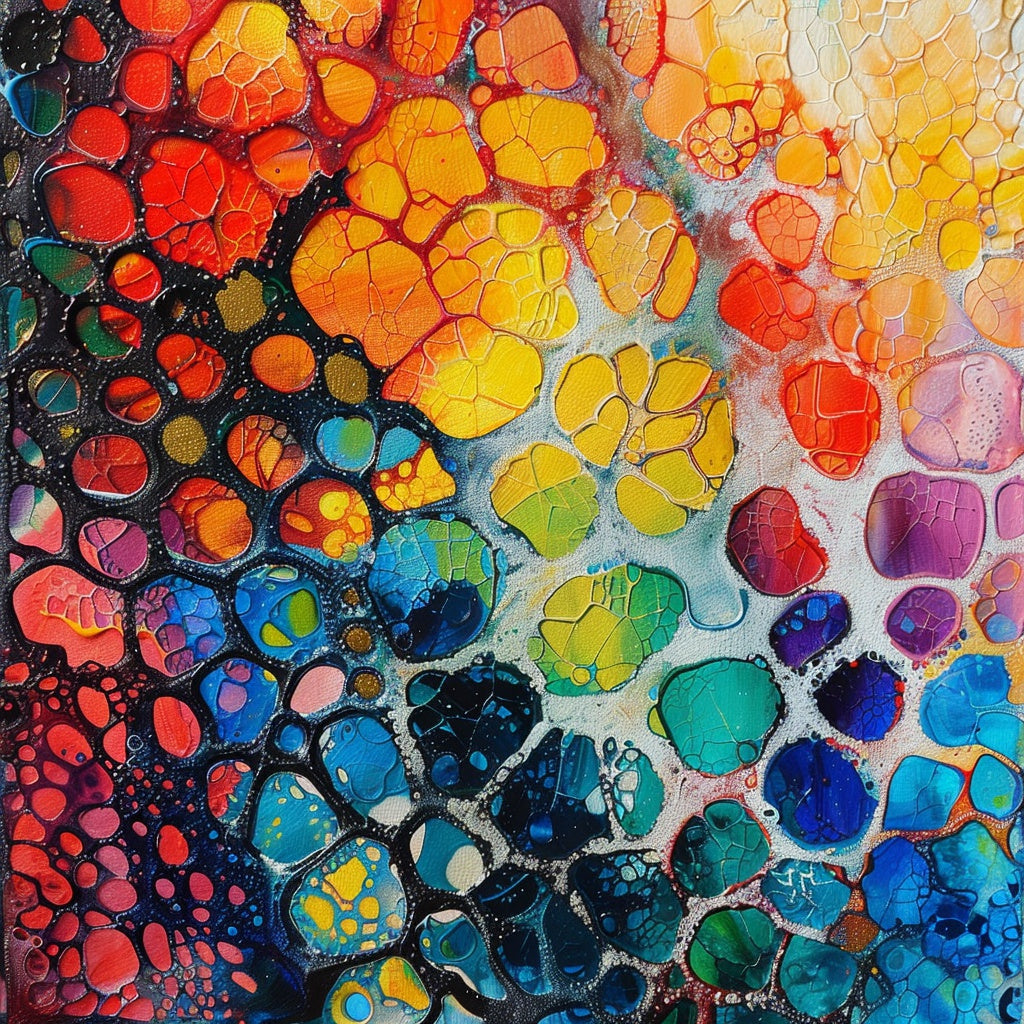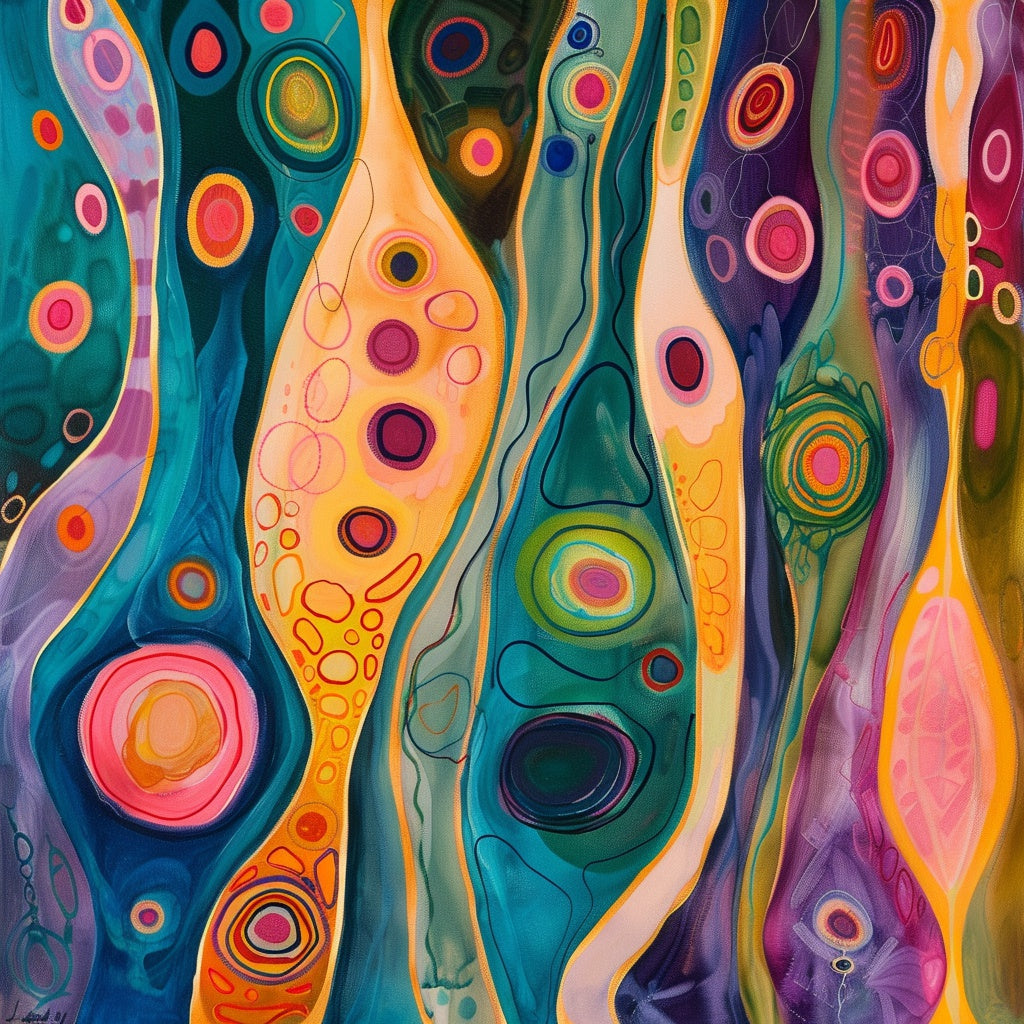Getting Started with AI Art: A Comprehensive Guide
Understanding AI Art Generation
AI art is rapidly gaining popularity, allowing users to create stunning visuals with just a few words. AI art generators use complex algorithms, such as deep learning and generative adversarial networks (GANs), to turn text prompts into images. These algorithms are trained on vast amounts of images and text, enabling them to recognize connections between words and visual elements. When a text prompt is entered, the AI uses this knowledge to create a corresponding image.
Exploring AI-generated art can provide insights into how artificial intelligence perceives the world. By examining the outputs of AI art generators, we can learn about the underlying algorithms and their understanding of concepts, relationships, and aesthetics.
Here are some of the most common AI art generation techniques:
- Generative Adversarial Networks (GANs): GANs utilize two neural networks: a generator that creates images and a discriminator that evaluates them. The generator aims to produce realistic images that can deceive the discriminator while the discriminator tries to identify fake images. This competition pushes both networks to improve, resulting in more sophisticated image generation. GANs are used in many applications, including generating realistic faces, creating images in specific art styles, and producing deepfakes.
- Neural Style Transfer: This technique combines the content of one image with the artistic style of another. For example, you could apply the style of Van Gogh's "Starry Night" to a personal photograph. This demonstrates how AI can reinterpret and remix existing art styles, opening new creative avenues.
- Text-to-Image Generation: This technique is the most common in AI art generators. A text description, a prompt, generates an image. The more specific and detailed the prompt, the better the AI can understand and generate the desired image.
- Latent Space Manipulation: This involves navigating the abstract space where AI-generated images exist. By manipulating points within this space, artists can fine-tune features like color, shape, and style. This provides a powerful tool for creative exploration in digital art.
- Diffusion Models: These models add noise to an image until it becomes random noise. They then learn to reverse this, refining the random noise into an image based on a text prompt. This method is very effective in generating high-quality and diverse images.
- AI-assisted Image Editing: AI enhances traditional image editing by automating tasks such as object removal, color correction, and style transfer. This helps artists streamline workflows and focus more on creative aspects.
Exploring Popular AI Art Generation Tools
Many AI art generation tools are available, each with unique features. Here are some of the most popular:
- Midjourney: Known for its artistic and imaginative outputs, Midjourney is a popular choice for unique and stylized images. It operates through Discord, using a large language model (LLM) to interpret text prompts.
- DALL-E 2: Developed by OpenAI, DALL-E 2 is known for generating highly realistic and detailed images that closely align with the user's vision.
- Stable Diffusion: This open-source model is accessible through various platforms, including DreamStudio, and is known for its flexibility and wide range of image styles. Stable Diffusion uses a token system to measure the cost of generating images based on size and complexity.
- Leonardo AI: A newer option, Leonardo AI offers a user-friendly interface, high-resolution images, advanced customization options, and template presets. Like Stable Diffusion, it uses a token-based system.
- Adobe Firefly: Integrated into Adobe's Creative Cloud, Firefly offers features like text effects and seamless integration with other Adobe products, which is ideal for creative professionals already using Adobe software.
- Canva: This popular online design platform includes an easy-to-use AI art generator that is integrated with its other design tools. It's great for creating social media graphics, marketing materials, and other visual content. Canva allows for customization of AI-generated images with different styles, color schemes, and backgrounds.
Here is a table summarizing the tools:
| Tool | Platform | Pricing | Notable Features |
|---|---|---|---|
| Midjourney | Discord | From $10/month | Artistic style, imaginative outputs, Discord integration |
| DALL-E 2 | Web | Paid per image | Highly realistic images, detailed outputs |
| Stable Diffusion | Web, iOS, Android | Free and paid plans | Flexibility, wide range of styles, token-based pricing |
| Leonardo AI | Web | Free and paid plans | User-friendly interface, high-resolution images, template presets, token-based pricing |
| Adobe Firefly | Web, Adobe Creative Cloud | Free and paid plans | Text effects, integration with Adobe products |
| Canva | Web, iOS, Android | Free and paid plans | Easy to use, integrated with Canvas design tools, customization options |
Finding Online Communities and Forums
Connecting with other AI artists is a great way to learn new techniques, share your work, and find inspiration. Here are some online communities and forums dedicated to AI art:
| Community Name | Platform | Description |
|---|---|---|
| AIArtists.org | Website | A curated collection of AI artists and resources for exploring AI art. |
| Simplified AI Art Community | Website | Access to Simplified's AI image generator and a space for artists to connect and share their work. |
| r/aiArt | A popular subreddit for discussing AI art, sharing creations, and getting feedback. | |
| AI Arts Forum | Online forum | Dedicated to discussions about AI art generation tools and techniques. |
| ArtZone.ai | Website | An AI art community and gallery where artists can showcase and monetize their work. |
| NightCafe Creator | Website | A vibrant AI art community with daily challenges and chat rooms for connecting with other artists. |
Participating in AI Art Competitions and Exhibitions
Participating in competitions and exhibitions is a great way to gain exposure, receive feedback, and connect with others in the AI art community. Here are some examples:
| Competition/Exhibition Name | Organizer | Focus |
|---|---|---|
| AI-ARTS Competition | AI-ARTS.org | Showcases AI-generated art and explores the use of AI in art assessment. |
| Duke AI for Art Competition | Duke University | Encourages students, faculty, and staff to submit AI-generated artworks in various media. |
| 1839 Awards Color Photography Contest | 1839 Media | Includes an AI category for AI-generated images. |
Many online galleries and platforms also showcase AI art, such as the NVIDIA AI Art Gallery, which features a diverse collection of AI-generated visuals, music, and poetry. It is good to look for opportunities to exhibit your work and engage with the AI art community.
Ethical Considerations and Potential Challenges
As you explore AI art, it is important to consider the ethical issues and potential challenges associated with this technology.
- Ownership and Copyright: One of the most critical ethical concerns is ownership and copyright. It is unclear who owns the rights to AI-generated artwork: the prompt creator, the AI tool developer, or the AI itself. The legal landscape surrounding AI art is still developing.
- Bias and Representation: AI models are trained on large datasets, which can reflect existing societal biases. This may lead to AI-generated images perpetuating harmful stereotypes or misrepresenting certain groups. Using diverse and representative training data to reduce bias in AI art generation is important.
- Environmental Impact: Training AI models requires significant computing power, leading to substantial energy consumption. The environmental footprint of AI art generation is a growing concern, and it's important to be aware of the energy associated with this technology.
- Job Displacement: some concerns AI art generators may cause job losses in the creative industry. As AI tools become more advanced and accessible, they could automate tasks traditionally done by human artists, leading to job displacement and economic disruption.
It's important to discuss these ethical issues and promote responsible AI development and use.
Developing Your AI Art Style
Once you understand the basics of AI art generation, you can develop your artistic style. Here are some tips:
- Experiment with different AI tools and techniques: Each tool has unique strengths and weaknesses, and experimenting will help you find what best fits your creative vision.
- Refine your prompts: The quality of AI-generated art depends on the prompts. Use specific, detailed, imaginative descriptions. Include elements like mood, medium, and inspiration to guide the AI.
- Explore different art styles: Use prompts to steer the AI towards styles like surrealism, impressionism, or abstract art. You can even reference specific artists or artworks.
- Combine AI art with other creative tools: Use AI-generated images as a base for further creative work. Combine them with traditional art techniques, digital editing software, or other AI tools to create personalized work.
- Iterate: Generating AI art is an iterative process. Experiment with different prompts, settings, and techniques to achieve the desired results. Do not be discouraged by initial attempts; keep refining your approach and exploring new possibilities.
- Utilize negative prompts: Negative prompts allow you to specify elements you want to exclude from generated images. This helps refine the AI’s output and avoid unwanted features or styles.
- Explore CLIP Interrogator: CLIP Interrogator is a tool that can generate text prompts from images. This is useful for reverse engineering images and creating prompts that produce similar results.
AI art has the potential to democratize creativity, making art creation more accessible to all. It is a powerful tool for collaboration, allowing artists to explore new forms of expression. It is important to approach AI art with a critical and ethical lens, considering its impact on society, the art world, and the future of creativity.
eWEEK, "What Is the Best AI Art Generator? Eight Top Picks", eWEEK, accessed February 11, 2025. Link1
Adobe Firefly, "What is AI art & how does it work?", Adobe Firefly, accessed February 11, 2025. Link2
YouTube, "Dall-E Tutorial Part 1: Create Art with AI", YouTube, accessed February 11, 2025. Link3
Fiveable, "AI Art Techniques to Know for AI and Art", Fiveable, accessed February 11, 2025. Link4
AltexSoft, "AI Image Generation Explained: Techniques, Applications, and Limitations", AltexSoft, accessed February 11, 2025. Link5
Elegant Themes, "How to Make AI Art in 2025 (Detailed Tutorial)", Elegant Themes, accessed February 11, 2025. Link6
Zapier, "The top AI art generators", Zapier, accessed February 11, 2025. Link7
AutoGPT, "Mastering AI Art Generation: Top Tips Revealed", AutoGPT, accessed February 11, 2025. Link8
AIArtists.org, "Top 25 AI Artists - Photos, Bios, Exhibitions - History of AI Art", AIArtists.org, accessed February 11, 2025. Link9
Simplified, "Join Top AI Art Communities for Like-minded Artists", Simplified, accessed February 11, 2025. Link10
Reddit, "Welcome to ai Art!", Reddit, accessed February 11, 2025. Link11
AI Arts Forum, "AI Arts Forum :: Talking about Generative AI Art Tools", AI Arts Forum, accessed February 11, 2025. Link12
ArtZone.ai, "AI Art Community & Gallery", ArtZone.ai, accessed February 11, 2025. Link13
NightCafe Creator, "Free AI Art Generator: All the best AI models in one place", NightCafe Creator, accessed February 11, 2025. Link14
AI-ARTS, "Competition", AI-ARTS, accessed February 11, 2025. Link15
AI-ARTS, "AI ART Competition 2024 - 3rd Edition", AI-ARTS, accessed February 11, 2025. Link16
Duke Center for Computational Thinking, "AI for Art Competition - 2022", Duke Center for Computational Thinking, accessed February 11, 2025. Link17
Hyperallergic, "Real Photographer Beats Out Robots in AI Art Competition", Hyperallergic, accessed February 11, 2025. Link18
NVIDIA, "NVIDIA AI Art Gallery", NVIDIA, accessed February 11, 2025. Link19
Lummi, "All creatives should know about the ethics of AI-generated images", Lummi, accessed February 11, 2025. Link20
Research Guides, "AI Image Ethical & Legal Issues - Artificial Intelligence and Images", Research Guides, accessed February 11, 2025.



Leave a comment (all fields required)